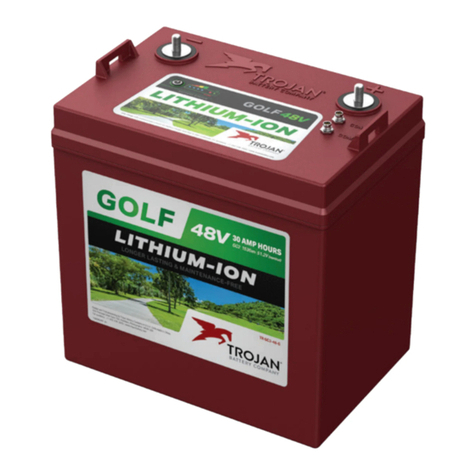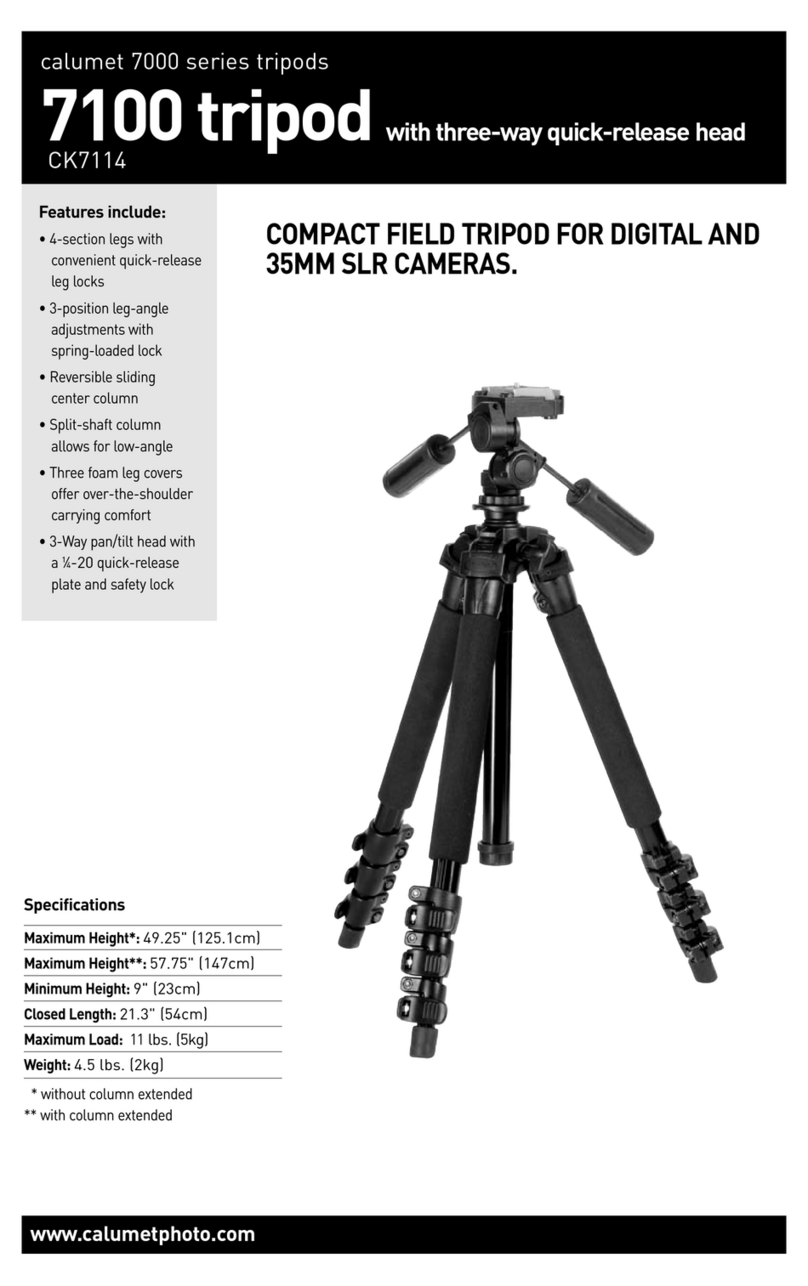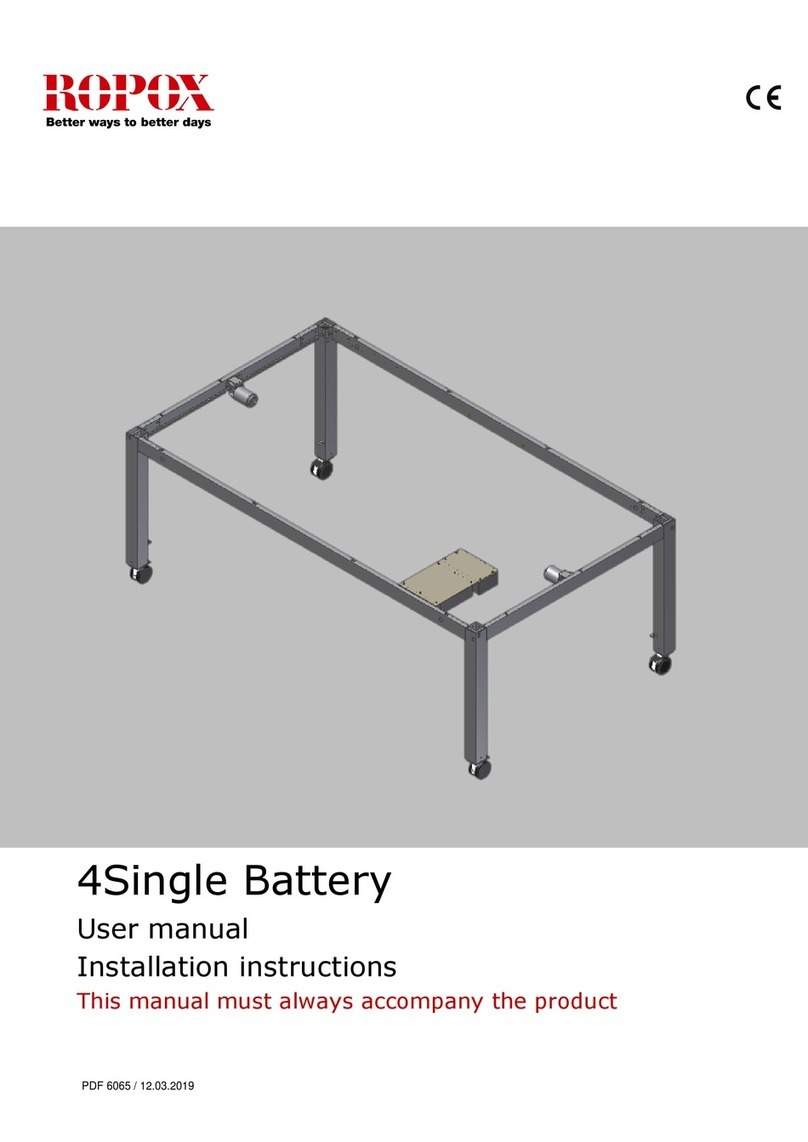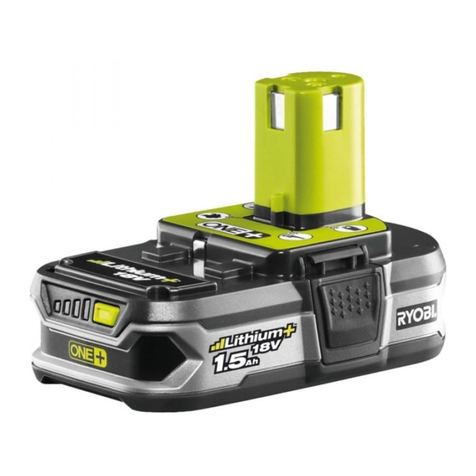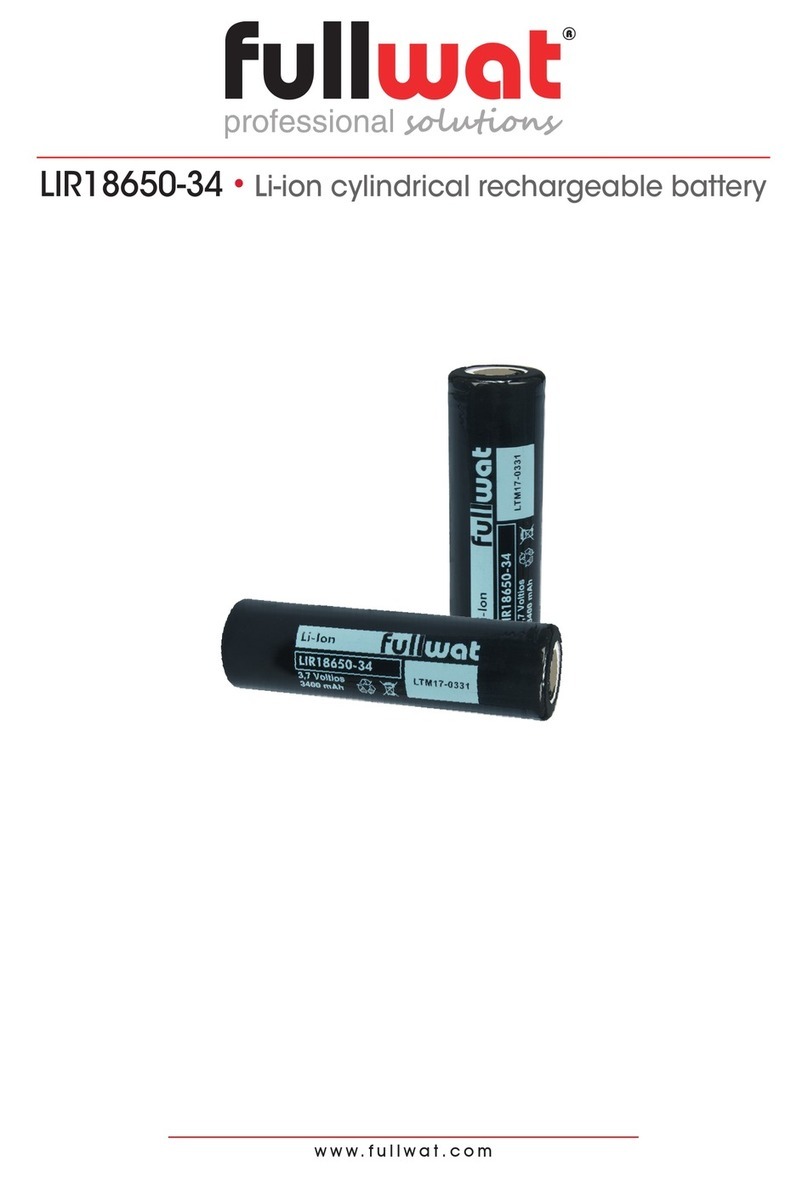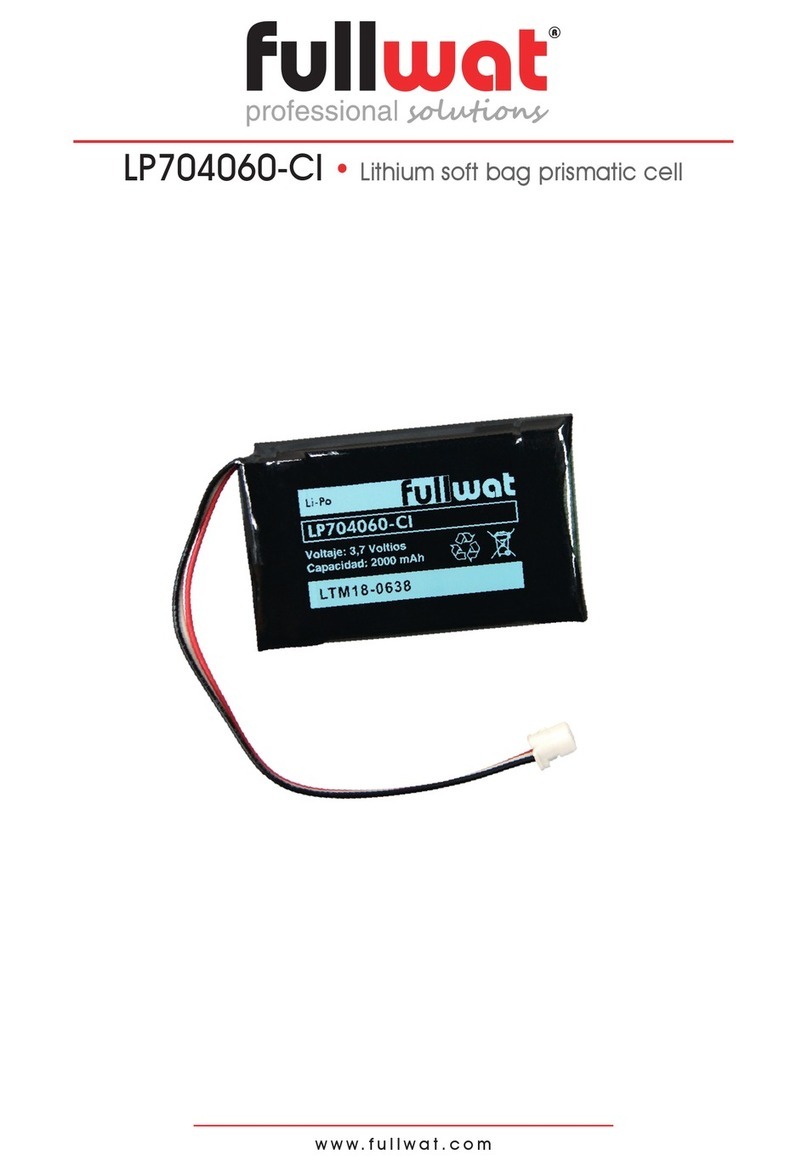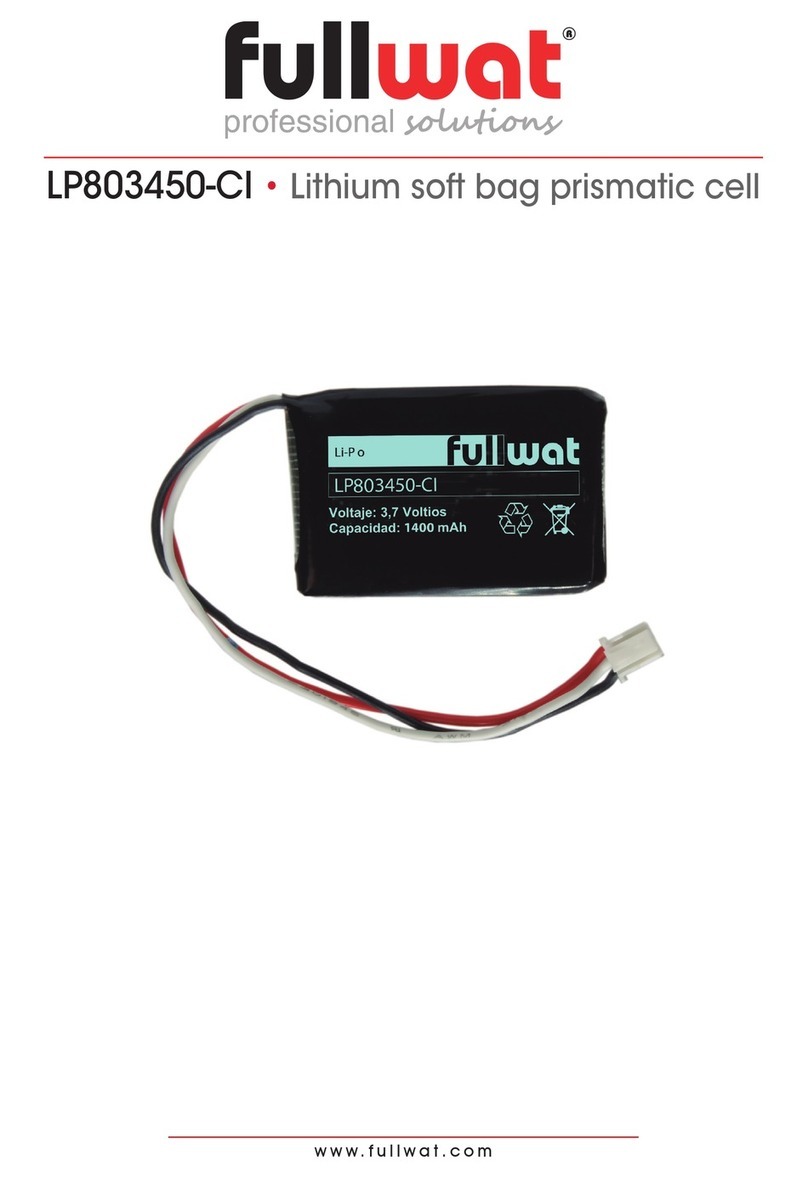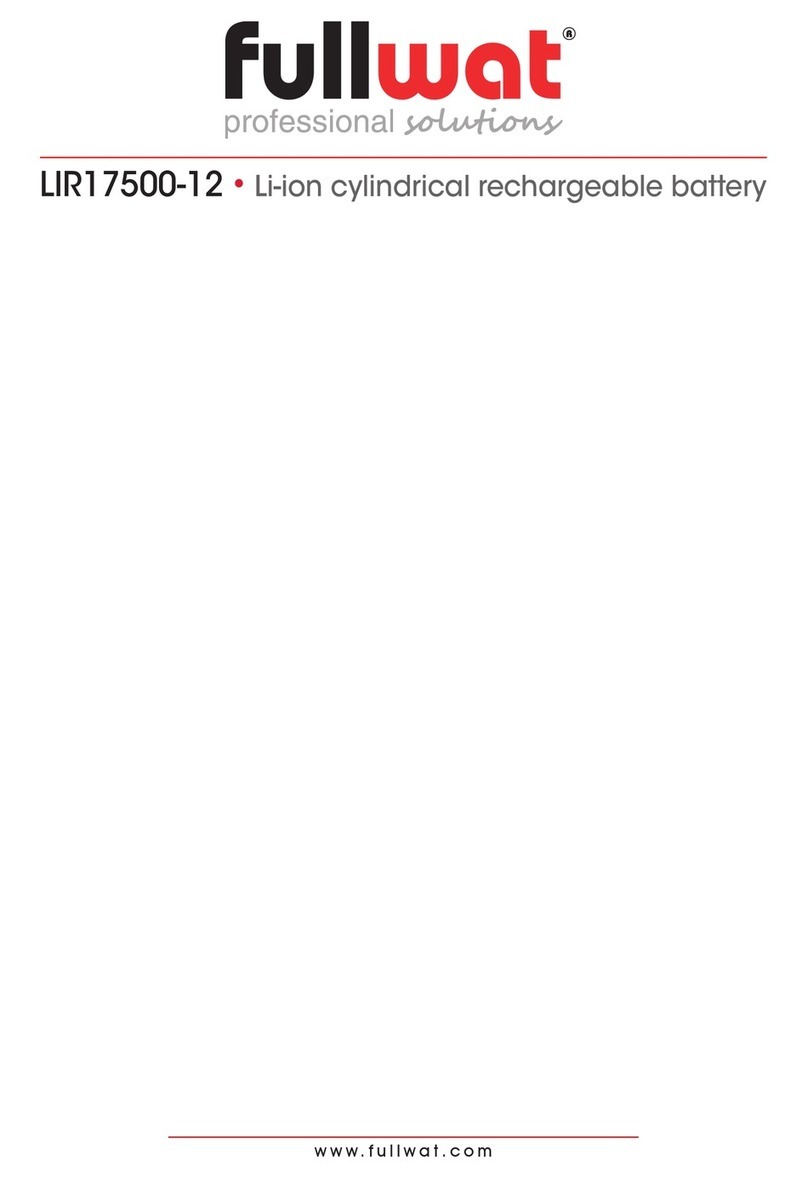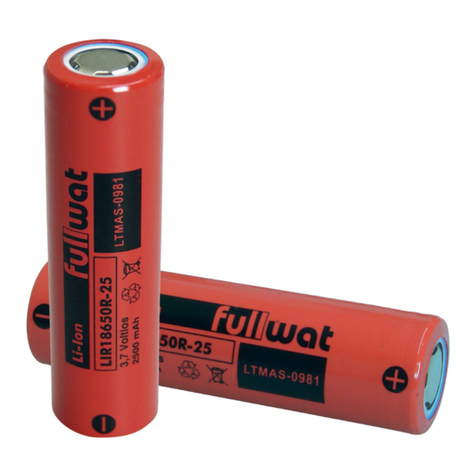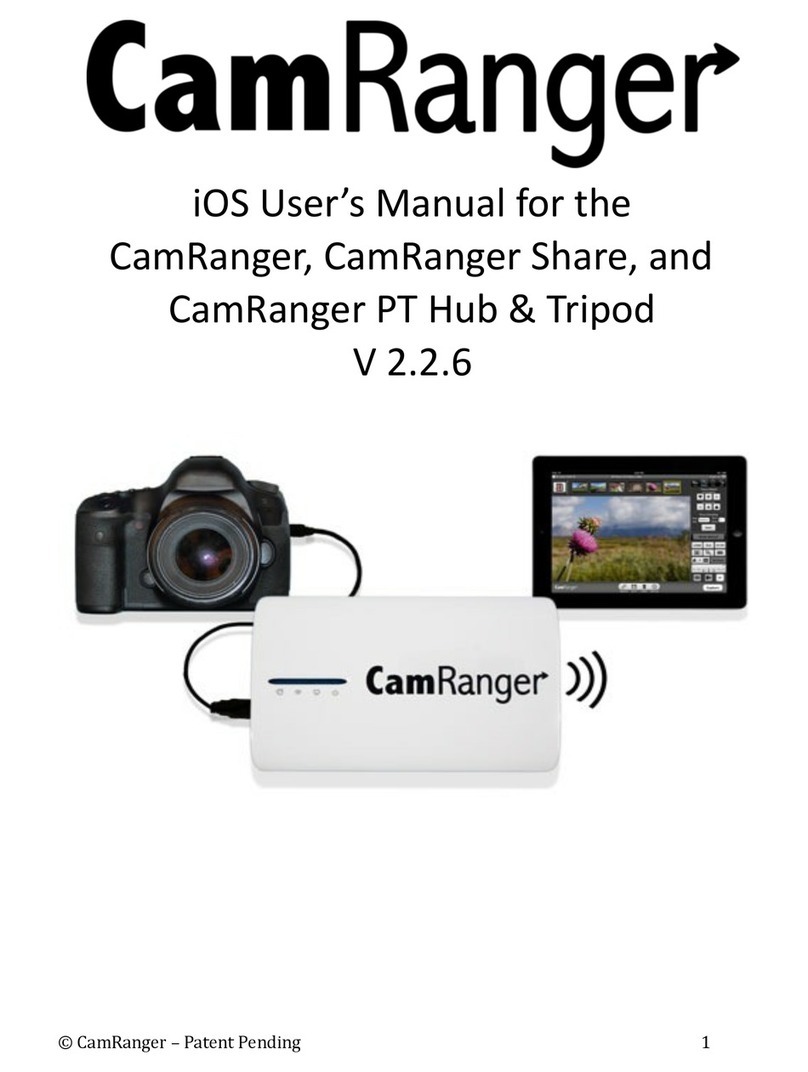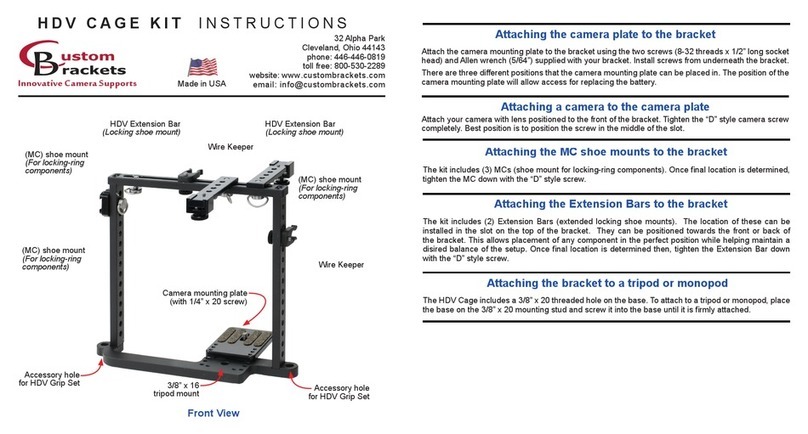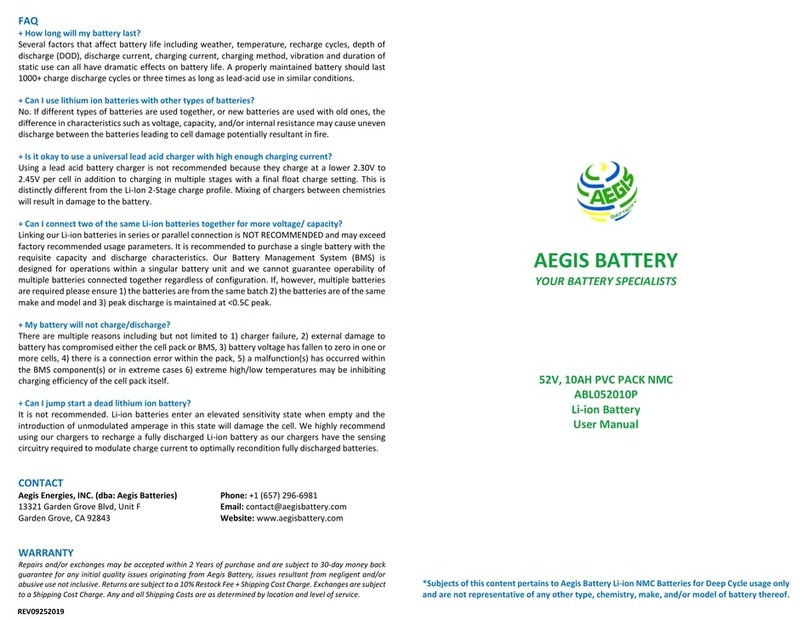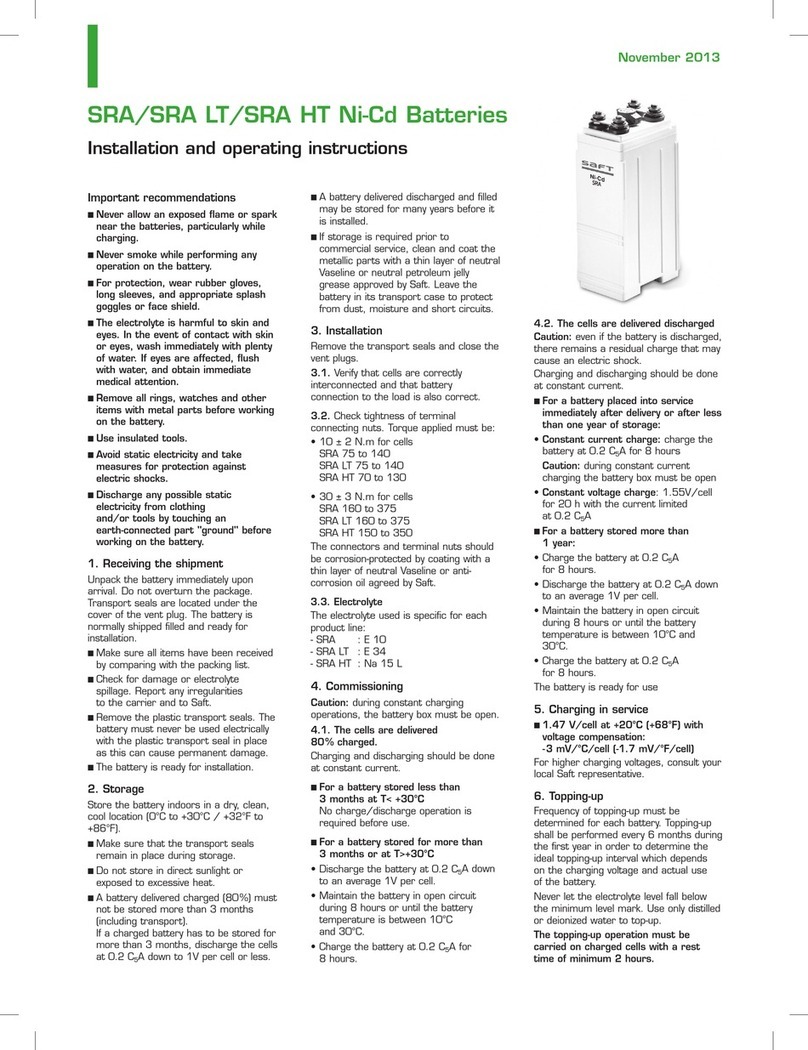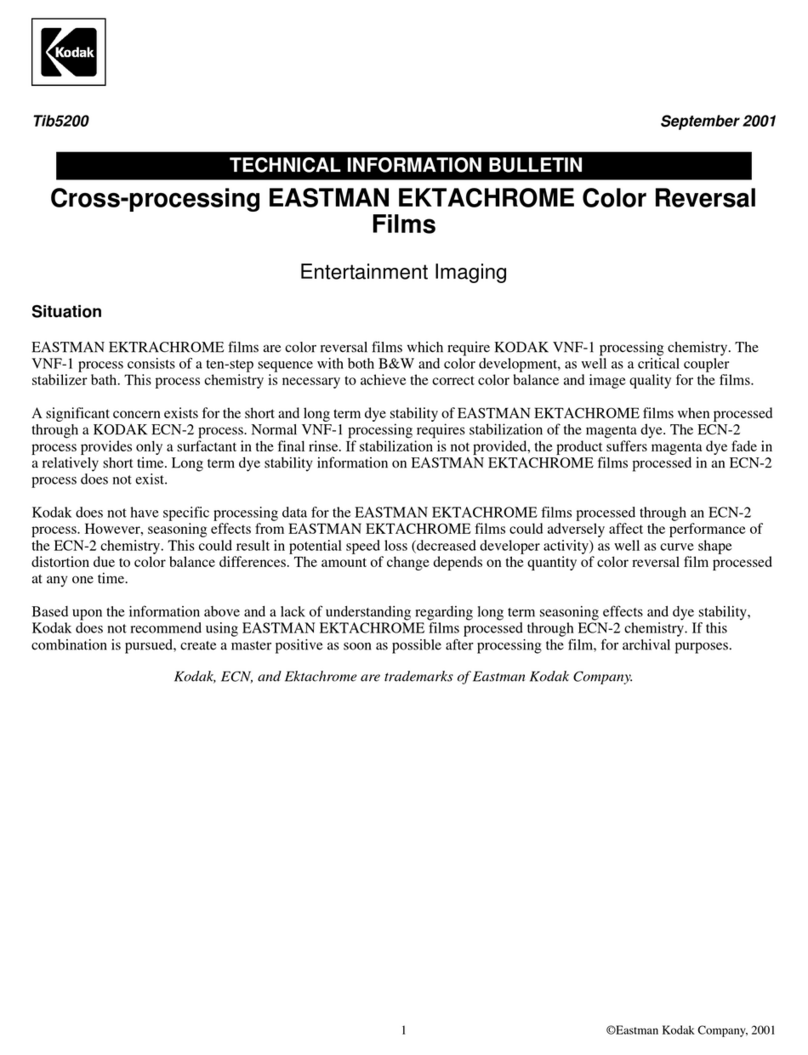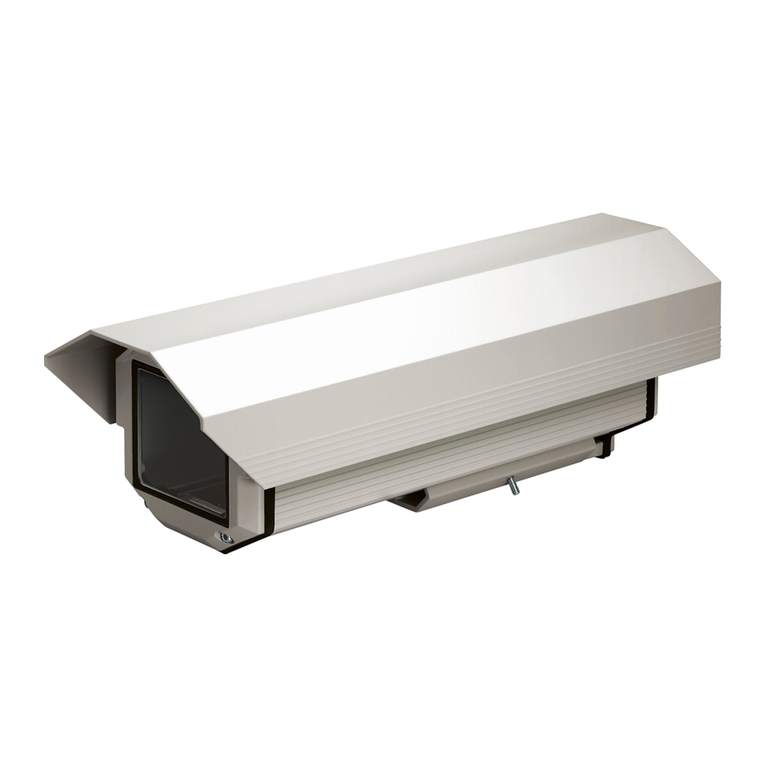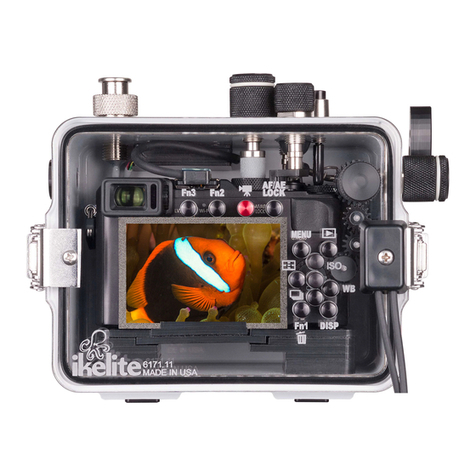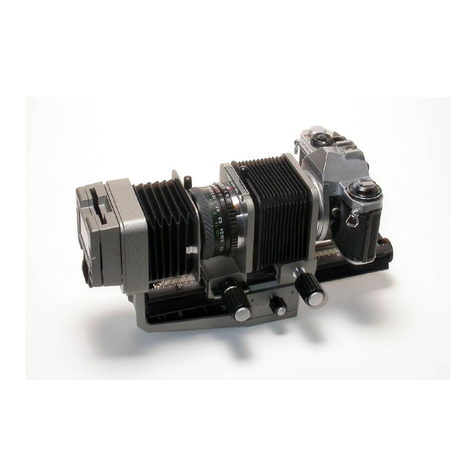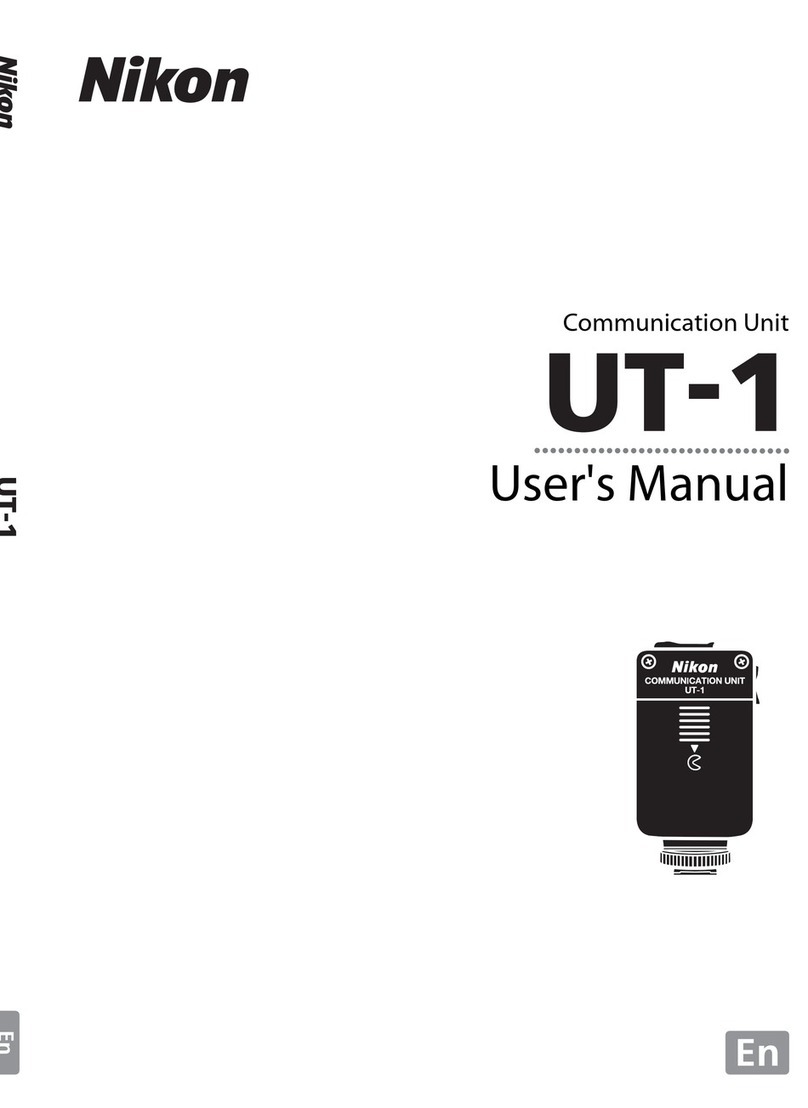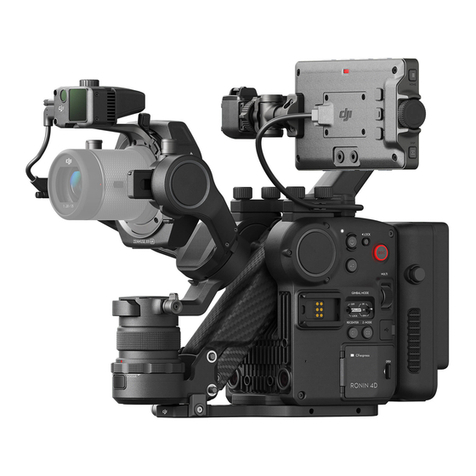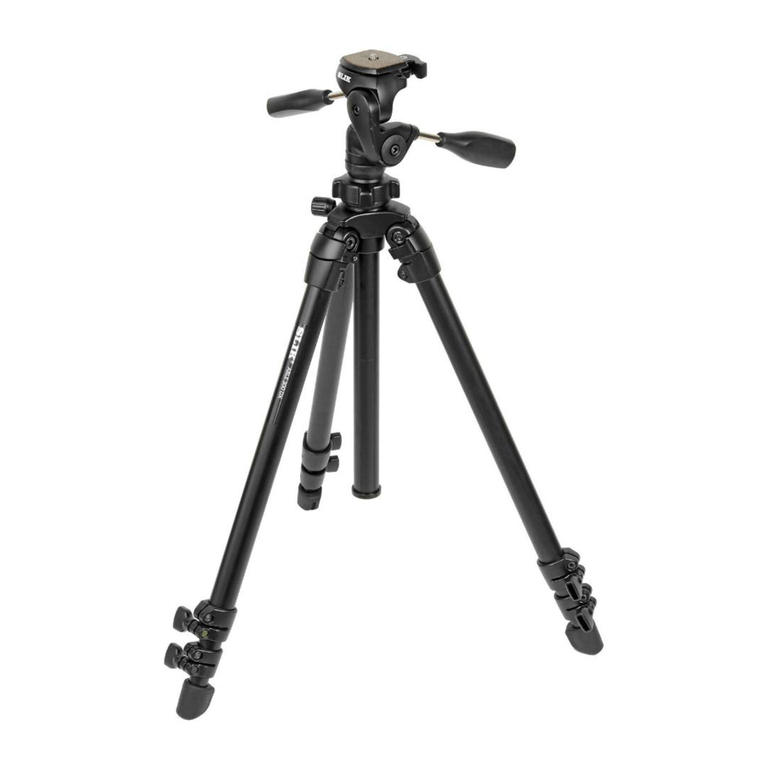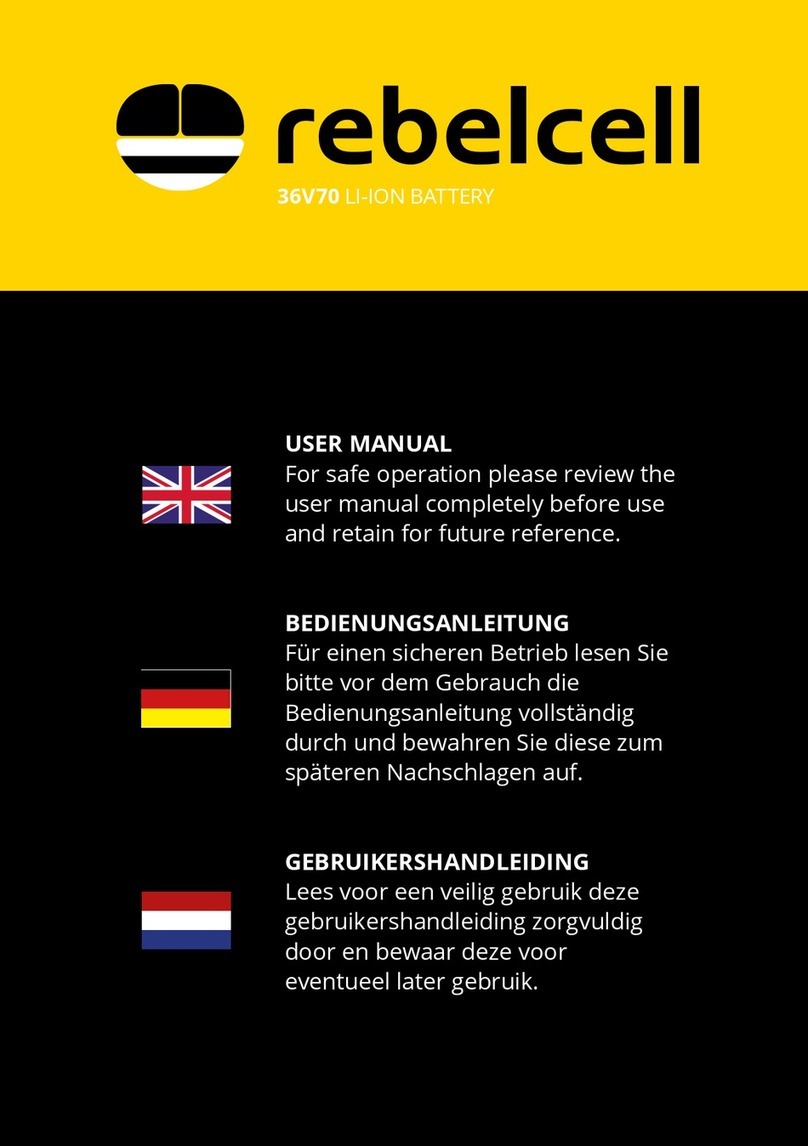
www.fullwat.com
LIR18650-26 •Rechargeable Lithium battery
6. Battery Protection
The battery shall be with the over-charging prevention, over-discharging prevention, and over-current prevention
during use. Protective circuit shall have protective functions as follows:
1. Over-charging protection
Overcharging prevention stops charging if any cell of the battery pack reaches 4.25V.
2. Over-discharging protection
The Over-discharging protection monitors the voltage of every cell in the pack and works to avoid a drop in the
cell voltage to 2.8V or less.
3. Over-current protection
The cell shall be discharged at less than the maximum discharge current specified in the Specification Approval
Sheet. A high discharging current may reduce the discharge capacity significantly or cause overheating.
7. Caution in use
To ensure proper use of the battery please read the manual carefully before using it.
Handling
– Do not expose to, dispose of the battery in fire.
– Do not put the battery in a charger or equipment with wrong terminals connected.
– Avoid shorting the battery
– Avoid excessive physical shock or vibration.
– Do not disassemble or deform the battery.
– Do not immerse in water.
– Do not use the battery mixed with other different make, type, or model batteries.
– Keep out of thee rach of children.
Charge and discharge
– Battery must be charged in appropriate charger only.
– Never use a modified or damaged charger.
– Do not leave battery in charger over 24 hours.
Storage
– Store the battery in a cool, dry and well-ventilated area.
Disposal
– Regulations vary for different countries. Dispose of in accordance with local regulations.
Note - Above testing of safe characteristic must be with protective equipment.
8. Battery operation instruction
Charging
– Charging current: Cannot surpass the biggest charging current which in this specification book stipulated.
– Charging voltage: Does not have to surpass the highest amount which in this specification book stipulated to
decide the voltage.
– Charge temperature: The battery must carry on the charge in the ambient temperature scope which this
specification book stipulated
Uses the constant electric current and the constant voltage way charge, the prohibition reverse charges. If the
battery positive electrode and the cathode meet instead, can damage the battery.
Discharging current
The discharging current does not have to surpass this specification book stipulation the biggest discharging current,
the oversized electric current electric discharge can cause the battery capacity play to reduce and to cause the
battery heat.
Discharge temperature
The battery discharge must carry on in the ambient temperature scope which this specification book stipulated.
Over-discharges
After the short time excessively discharges charges immediately cannot affect the use, but the long time excessively
discharges can cause the battery the performance, battery function losing. The battery long-term has not used, has
the possibility to be able to be at because of its automatic flashover characteristic certain excessively discharges the
condition, for prevented excessively discharges the occurrence, the battery should maintain the certain electric
quantity.
Storing the Batteries
The battery should store in the product specification book stipulation temperature range. If has surpasses above for
six months the long time storage, suggested you should carry on additional charge to the battery.
9. Warranty
The warranty is specified in our warranties section of Terms of Sales. If the product is to be stored for more than
three months it is necessary to perform the appropriate maintenance to ensure the good condition of the batteries.
Consult our annex to the Terms of Sales on the recommended maintenance.
10. Other The Chemical Reaction
Because batteries utilize a chemical reaction, battery performance will deteriorate over time even if stored for a long
period of time without being used. In addition, if the various usage conditions such as charge, discharge, ambient
temperature, etc. are not maintained within the specified ranges the life expectancy of the battery may be shortened
or the device in which the battery is used may be damaged by electrolyte leakage. If the batteries cannot maintain a
charge for long periods of time, even when they are charged correctly, this may indicate it is time to change the
battery.
11. Note:
Any other items which are not covered in this specification shall be agreed by both parties.
